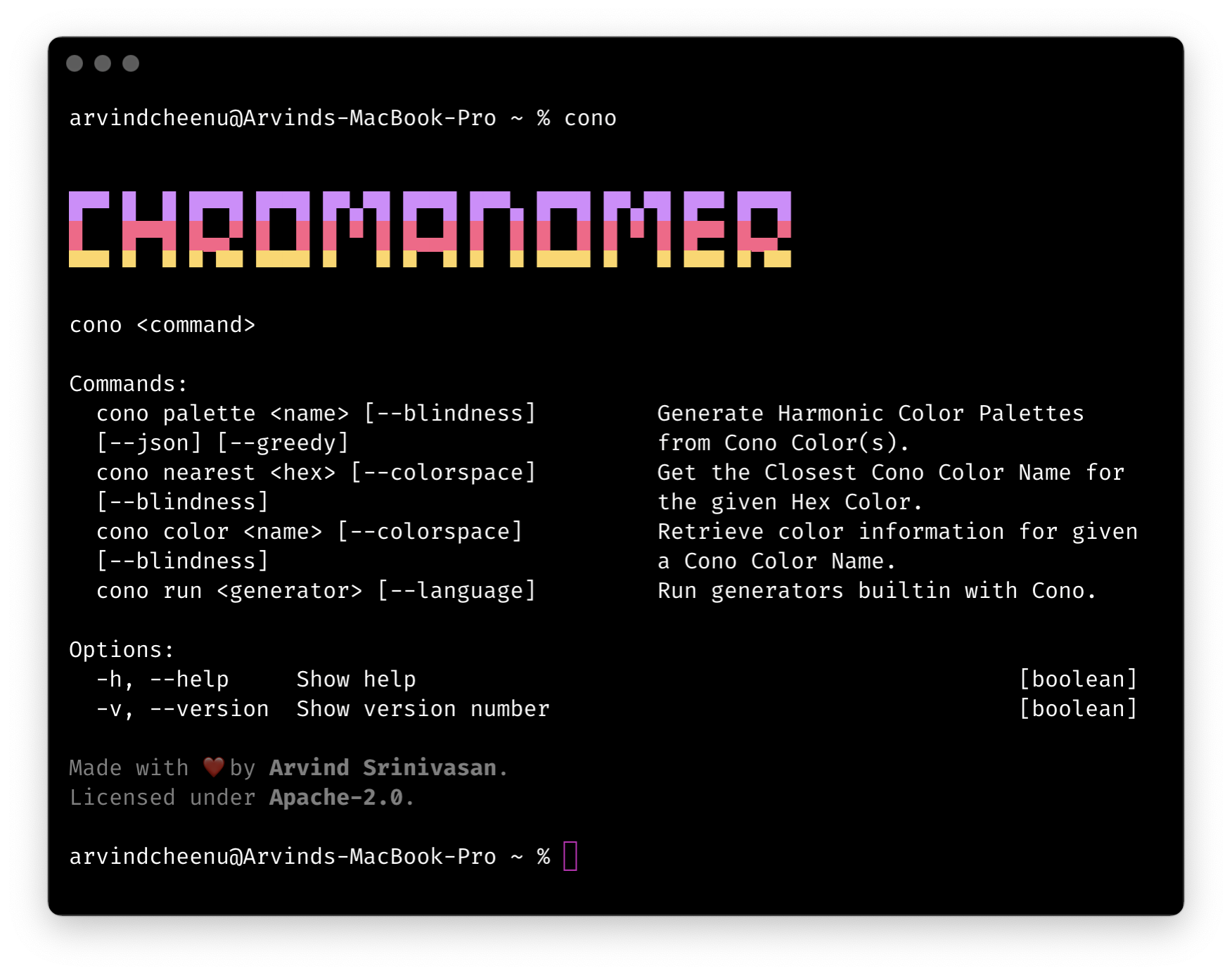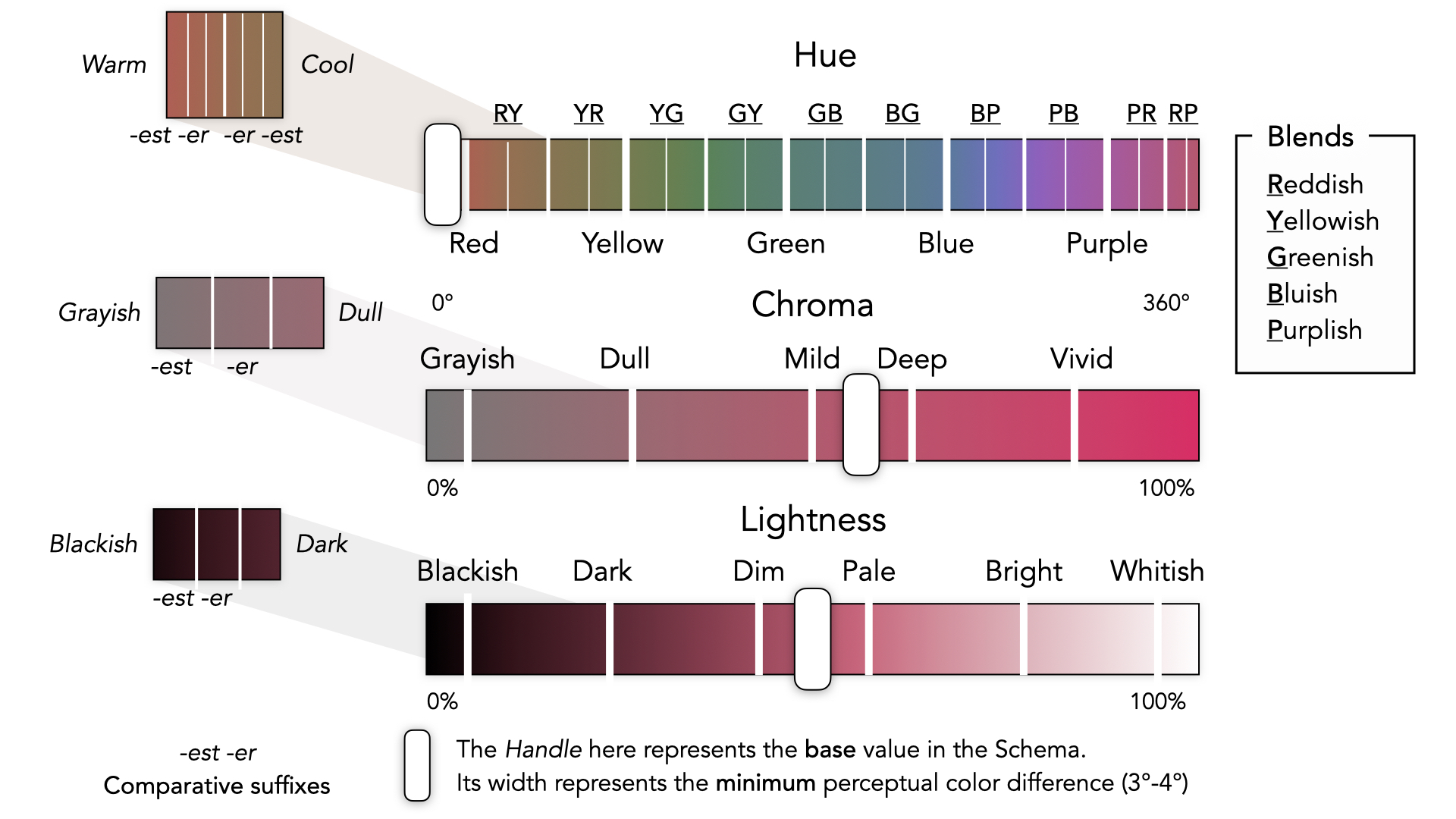chromanomer
v1.0.4
Published
A Javascript Library enabling Universally Accessible Color Selection through Intutive Naming Conventions.
Downloads
17
Maintainers
Readme
🍭 Chromanomer
Chromanomer (abbreviated cono) is a perceptually intuitive color naming system based on the Lightness Chroma Hue color space that covers a sizeable spectrum of colors while boasting a negligible learning curve.

Made with ❤️ by Arvind Srinivasan. Licensed Under Apache-2.0.
🔑 Key Features
- 👁️ Perceptually uniform colours
- 👌 Semantically sound names
- 🌐 ii8n friendly
- ♿ Visually Accessible by design
🤔 Choice of Color Space
This library builds over the HSLUV Color Space that maps the boundaries of RGB Color Space to the perceptually uniform CIELCHuv Color Space, thus circumventing its problem of unbounded chroma. Though this leads to non-uniform chroma, the trade-off is less significant in comparison with other colorspaces:
- HSL❓ While this transformation of RGB color space is more intuitive in its representation, the lightness in HSL does not represent perceptual lightness but rather relative brightness.
- Munsell❓ While colors were loosely based on perception, they were mostly inconsistent and dependent on the environment. Moreover, quantitative differences could only be defined over a single color attribute.
- NCS❓ Based on the psychophysics of color perception, NCS is better than Munsell as environmental lighting conditions do not impact color choices. However, this system must not be used to model perceived color differences, which is necessary requirement for a naming system to be accessible.
- LAB❓ Though the CIELAB color space represents a broader color gamut with better perceptual accuracy than the Munsell System, the parameters a* and b* makes it harder to arrive at a mental model.
🎨 Designing the Nomenclature of Color
The following schema was arrived at by extracting the best traits from existing naming solutions (such as the Five Color Primaries in Munsell Naming System) and selecting linguistically universal color terms. The incorporation of Adjective terms also enhances the learnability and composability by reducing the potential number of color terms to remember.

For a more detailed look at an object applying this schema, please see the file ./lang/cono.en.json.
Besides the above considerations while designing the schema, the following were also looked for:
- The arrangement of terms according to increasing order of intensity in chroma and lightness while diverging from the base value of the schema (see The Handle in the above schema).
- The arrangement of Warm and Cool Ranges according to the gradatation of hues from adjacent hue sectors.




